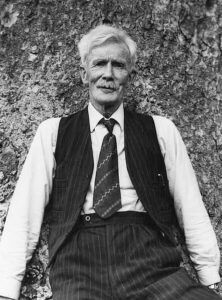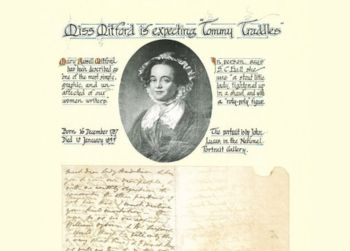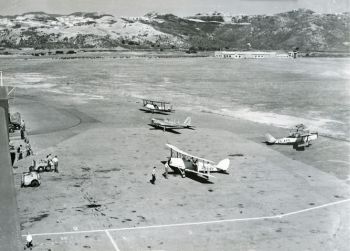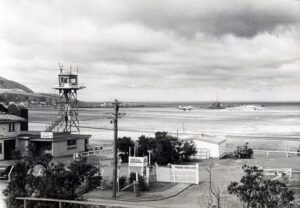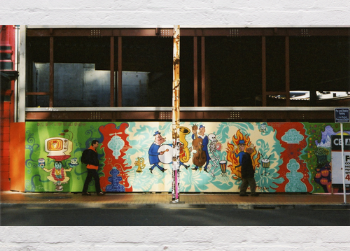Wellington is full of public works of art that blend seamlessly into our landscape. Sculptures effortlessly populate the waterfront and botanic gardens while many murals and installations take pride of place on retaining walls, the sides of buildings and in the city’s parks. Many of us tend to wander past these works on our way to work with little more than a passing glance. They’ll be there tomorrow, right?
In 1996 Maribeth Coleman, an American who found herself living at the end of the world in Roseneath, began to notice all of this creativity while she commuted between her many volunteering roles in the community. From this seed a project was created; to photograph and record and much of Wellington’s public art as possible. Over the following eight years Maribeth continued with her documentation, compiling her work into 10 hefty volumes which she donated to the Central Library shortly before moving back to the United States.
The entire archive is worth a browse, but here’s some notable works which you might remember if you spent time in Wellington around 20 years ago. They’re now long gone; buildings demolished, murals painted over, old replaced with new.
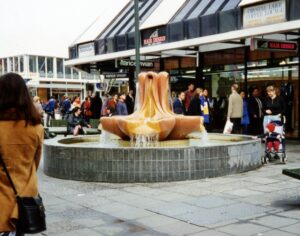
Manners Mall Fountain, c. 1989
Back when this section of Manners Street was completely pedestrianised, this fountain was despised by local businesses for attracting loiterers and the occasional bottle of bubble bath. It appears the loiterers didn’t like it either; extensive graffiti and damage resulted in the central sculpture to being removed in 1997, followed by the rest of the fountain in 2001.
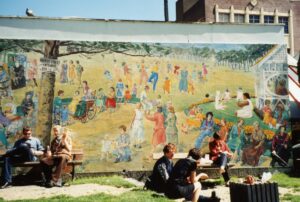 Te Aro Park Women’s Toilets, Bill Mackay
Te Aro Park Women’s Toilets, Bill Mackay
A little further down the street was the Te Aro Park Women’s bathrooms. These were painted by local muralist Bill Mackay in 1983, and remained until the building was demolished in 1998. An updated version of the mural was painted on the replacement toilets the following year by Marz Cummings.
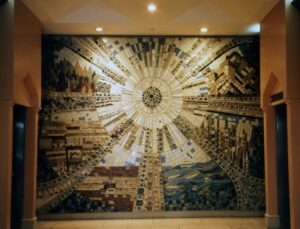
Untitled Mural 1972, J.R. Cowan
Despite his significance as a New Zealand artist and potter, Roy Cowan’s Untitled Mural 1972 unfortunately makes the list of forgotten works. This large-scale mosaic was commissioned by the National Mortgage & Agency Co of NZ Ltd and is potentially still in its place in a Featherston Street office building; but renovations since means it is no longer accessible by the public.
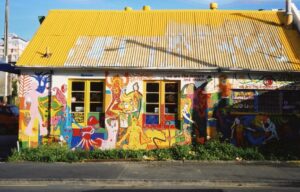
Spinnable Smith Laundrette, 2001
This laundrette-turned-arts centre once sat right in the path of the proposed Wellington Bypass construction. It was painted by the community during the 2001 Fringe Festival and featured anti-bypass messages. However, this was not enough to save the building however and it was eventually demolished to make way for the new road in 2006.
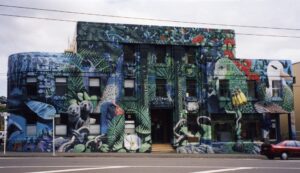 Gateway for Giants, Chris Finlayson
Gateway for Giants, Chris Finlayson
In 1991 muralist Chris Finalyson was commissioned to paint the front of this Taranaki Street building, occupied by the Forest and Bird protection society. It was a significant feature of the building for about 15 years before the site was demolished for the development of an apartment block.
(Fake) Moa, Dominion Farmers Institute 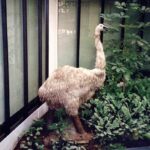
This moa pushes the boundaries of what is and isn’t art. However, Maribeth felt compelled to take a photo of it, so here we are. Much remembered by frequenters of the Dominion Farmers Institute building on Featherston Street, nobody seems to know where it came from or where it is now.
There’s over 360 works in this public art archive so be sure to see it in its’ entirety on Wellington City Recollect.
